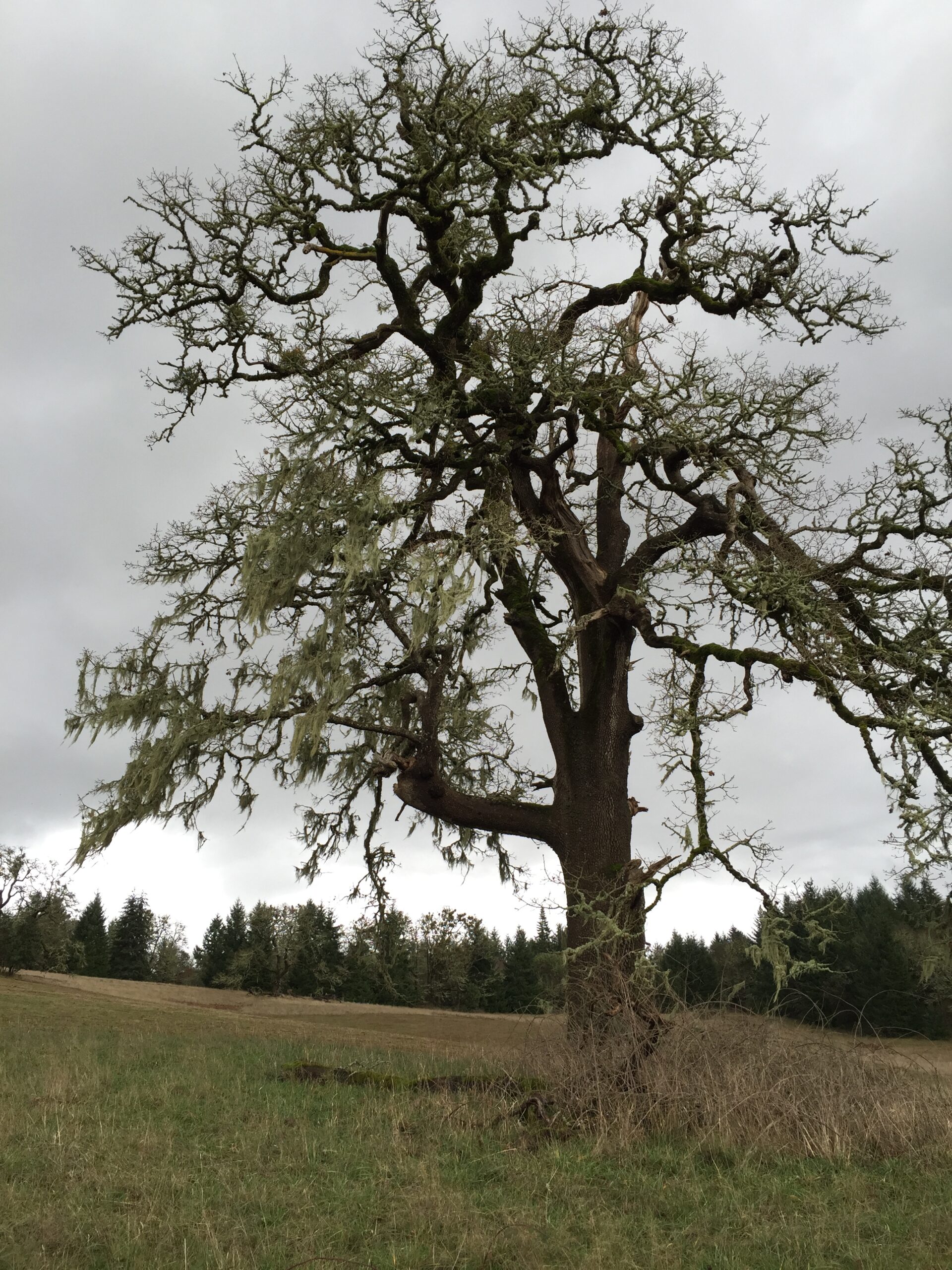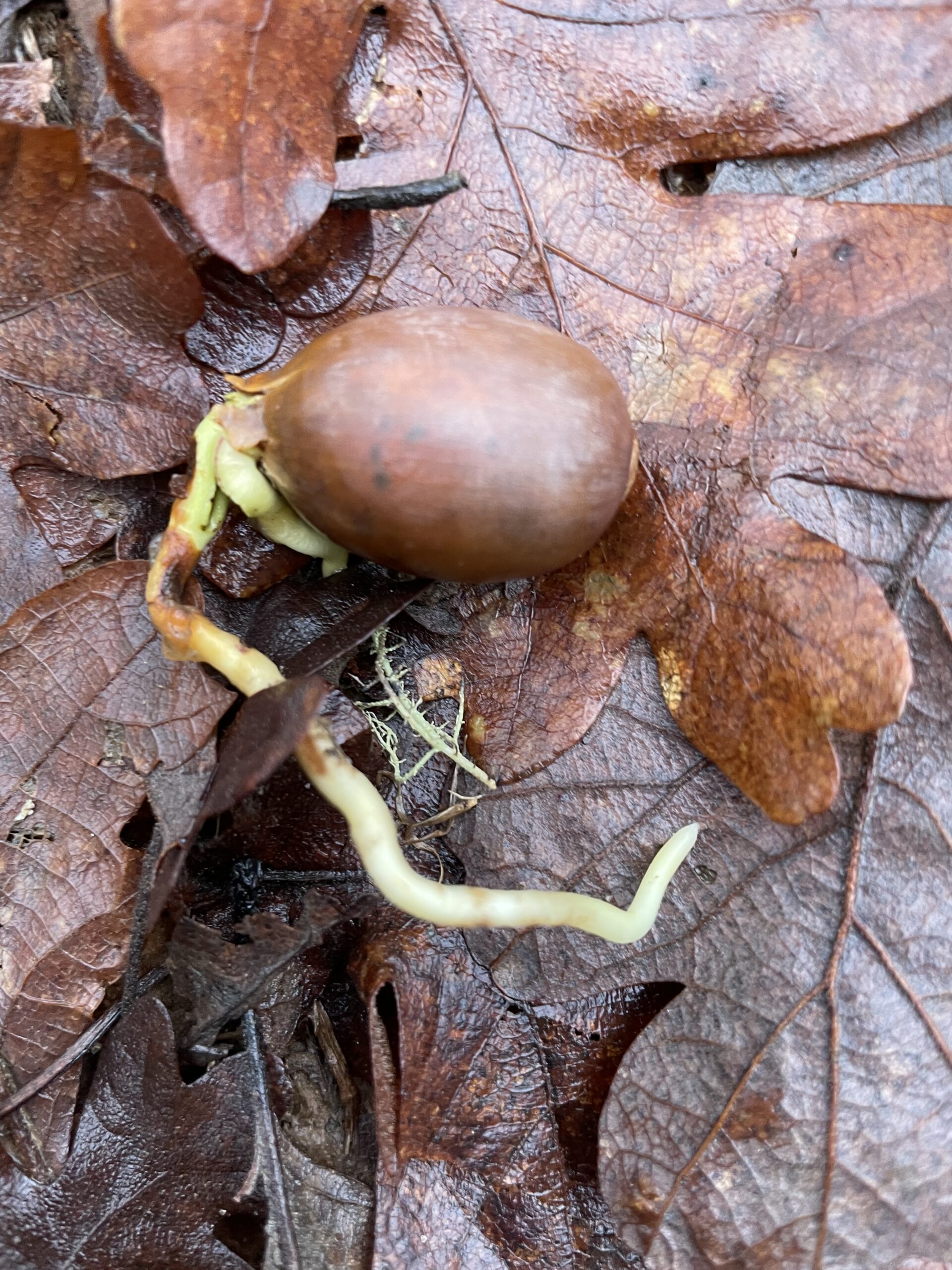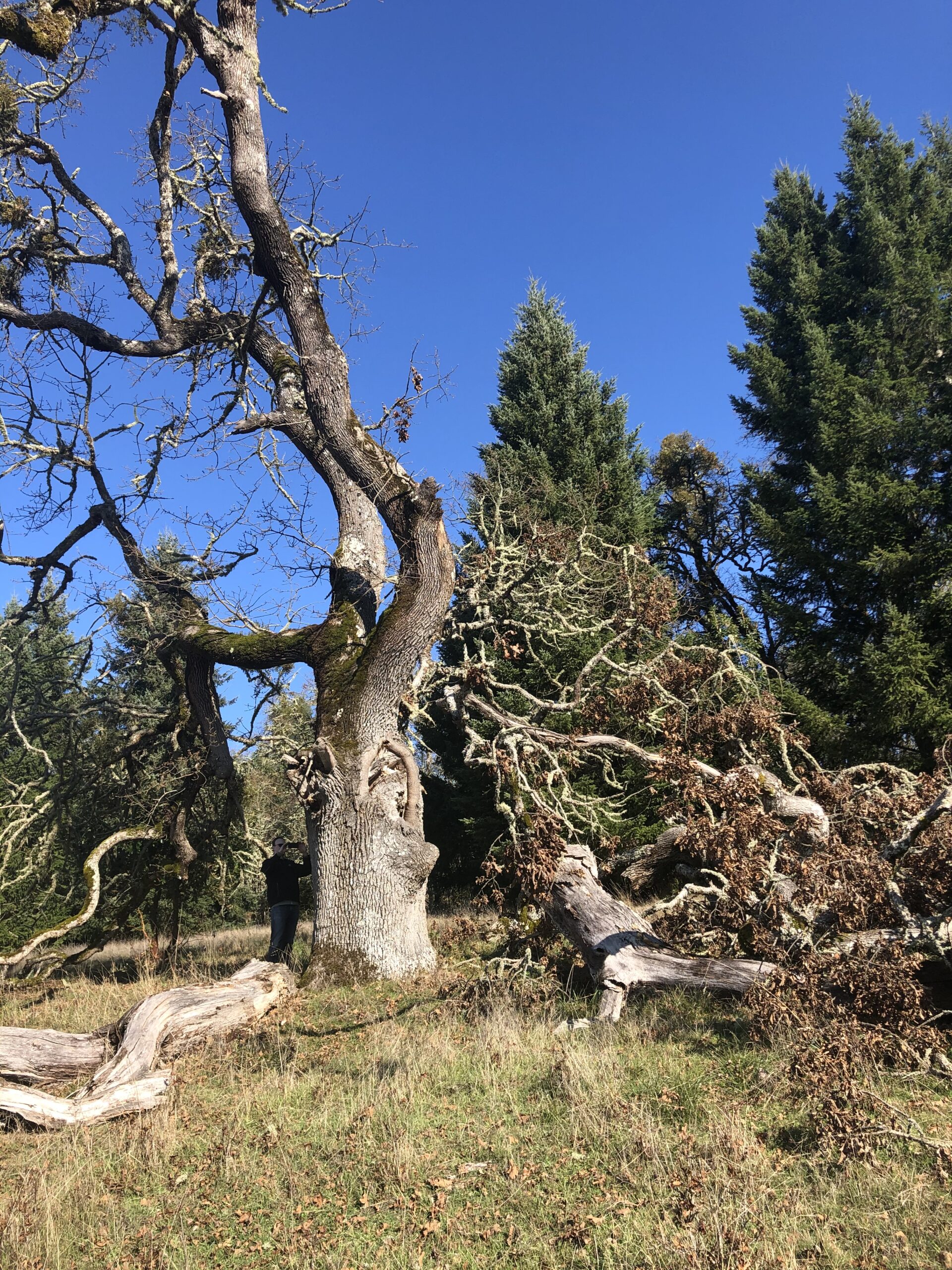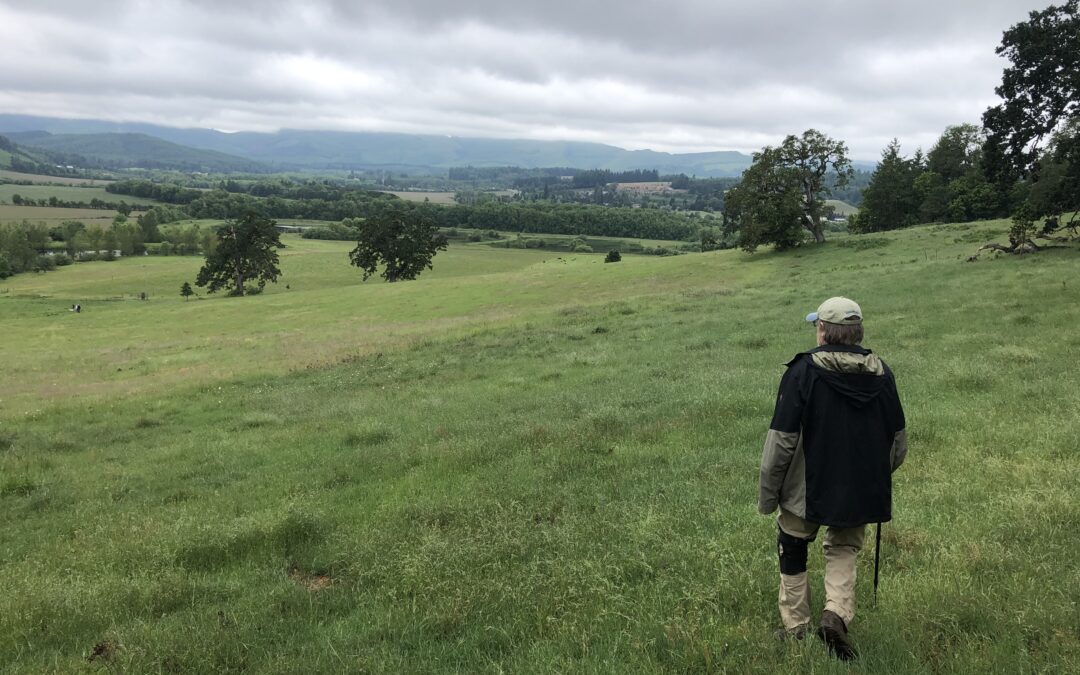by Jack Halsey, OLWC Executive Director
My grandparents introduced me to oak trees in 1996 on their ranch in the Willamette Valley—a playground of ponds, creeks, crops, woods, pasture, oak prairie, and savannah. I remember growing up, the smell of the air and soil was different under the oaks than it was in the forest. The long branches and sturdy trunks of the oaks are perfect for climbing—or for admiring from below. I knew these trees were significant because they were sturdy, old, and big. And they are changing over time.
One of the old oak trees dated back to 1608. These trees have grown under the care—or neglect—of many generations. The ones that survived on the landscape tell that story. Each generation has both the benefits and the responsibilities of the land. Caring for oaks is one way to make things better.
We can come together around seeing and understanding oak trees. The better we get to know these trees, the better we can care for them. You can find oaks on school campuses, around churches, in business landscapes, and in parks. I am working toward a future where we are further interconnected—caring for oaks from acorn to 400 or 500 years old. Working with volunteers of all ages to grow and care for native plants. Shade and acorns for future generations. An opportunity to repair harm and to heal.


Here in the land that drains to the Willamette River, this care continues through local oak restoration projects that bring together students, volunteers, and neighbors to tend the trees that define this landscape.
An oak tree is not just a tree. It is a memory and a connector.
Take the time to get to know an oak tree in your neighborhood. How long has this tree been here? What can I learn from this tree? What can I do to care for it? How can I make sure future generations are able to benefit from the shade and acorns it provides? How can I thank this tree and appreciate it?
An oak tree is a story. The tree my grandparents introduced me to came from an acorn. That acorn came from another tree. Did the acorn plant itself, or was it carried by a squirrel or a person? What year did it germinate?
A researcher in the Corvallis area, Dennis Albert, studied a piece of wood from an oak that fell at the ranch and counted the rings—each ring representing one year made up of four seasons. Throughout the life of the tree, evidence of fire was etched into the rings at periodic intervals.
Oak ecosystems are fire-adapted. For millennia, this landscape has been actively cared for and tended with Indigenous cultural fire—good fire—that allows oak trees to reproduce and germinate, and reduces competition for light, water, and other resources. When we want to see oak trees on the landscape, we take actions to help them thrive.


These trees are older than me, but their young offspring are brand new. Each acorn carries the story of its ancestors and the memory of the place.
Oak trees teach us the value of an interconnected system. This tree provides life for thousands of organisms, creates complexity on the landscape, and improves hydrology and soil health. Fire moves across the landscape, impacting and being impacted by people’s behavior. The sunlight and growth of trees give food, shelter, and places for insects and birds to live. Cavities become nests, and fallen wood, leaves, and acorns create the next generation of life.
Moss, lichen, poison oak, camas, licorice fern, fawn lily, mycelium, meadow buttercup, ash, serviceberry, and gooseberry all thrive in patches around their oak friends.
I ask myself—what’s my role in the system? My role is sharing my story and helping shape that vision for how we live alongside oaks and each other. A relational approach. Planning and making space for new housing, trees, cultural practices, recreation, nature, service, art, and safe transportation. We find opportunities to keep and create healthy pockets of oak systems—a landscape mosaic that supports us in different ways and provides a chance to learn and grow together.
Maybe it starts with a walk or roll outside. Find an oak tree near you, notice what grows around it, and think about how many hands, storms, fires, and seasons have shaped its life. Introduce this tree to a friend.
Learn More: Please spread the word, and also register and invite a friend to the Urban Forest Summit on November 1st: https://events.humanitix.com/year-of-the-oak

